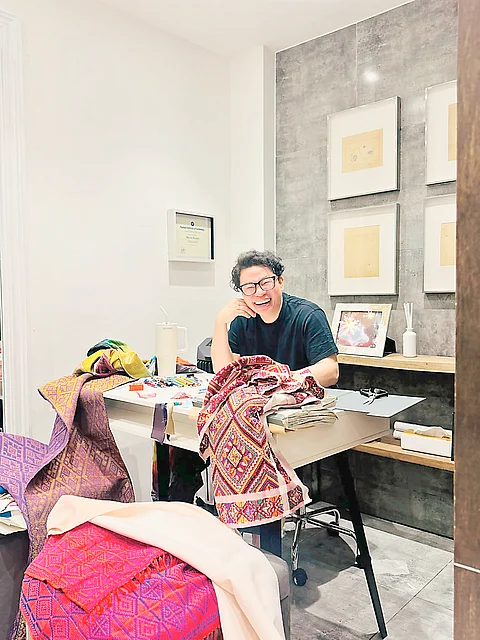
- NEWS
- the EDIT
- COMMENTARY
- BUSINESS
- LIFE
- SHOW
- ACTION
- GLOBAL GOALS
- SNAPS
- DYARYO TIRADA
- MORE

In the ever-evolving world of fashion, where sustainability meets artistry, Avel Bacudio once again proves why he is one of the country’s most forward-thinking designers.
Recently, Bacudio unveiled a groundbreaking creation on social media: a Barong Tagalog crafted from saluyot fibers — a bold statement that merges cultural heritage with textile innovation.
Innovating on textile was the topic that the designer spoke about to students from iAcademy last year, where he revealed he was collaborating with the Department of Science and Technology — Philippine Textile Research Institute (PTRI) on making fabrics out of saluyot and water lilies.
From leaf to loom
To most Filipinos, saluyot (Corchorus olitorius) is a familiar leafy vegetable, prized in local dishes for its nutritional value. In the hands of the PTRI, this humble plant takes on an entirely new purpose: Fashion.
Through meticulous research and development, PTRI transformed saluyot into a viable fabric source, blending its fibers with polyester in ratios such as 80/20, 70/30 and 60/40. The result is a fine, blemish-free textile with a smooth finish, versatile enough for garments and home applications like curtains, beddings and table linens.
Beyond lifestyle uses, the potential of saluyot extends to industrial applications such as ropes, nets and geotextiles that prevent soil erosion — making it a true multi-purpose material.
Vision for sustainability
For Bacudio, the innovation is not just about aesthetics. It is about championing Filipino ingenuity and offering sustainable alternatives in an industry that often grapples with waste and environmental impact.
Research into saluyot-cotton blends further pushes the boundaries, opening doors for all-natural textiles that could one day rival global sustainable fabrics.
Classic form, contemporary soul
The showcased Barong Tagalog is a vision of understated elegance. Its long-sleeved, button-down silhouette with a structured collar stays true to the national attire’s timeless form, while subtle striations in the fabric give it a refined, organic texture. Delicate woven embroidery runs down the front panel, nodding to traditional design but executed with a modern, minimalist sensibility.
Lightweight and breathable, the saluyot fabric lends itself perfectly to formal wear — proof that sustainability need not compromise style. Instead, it elevates it.
A cultural statement
What Bacudio presents is more than a garment; it is a cultural milestone. By weaving together heritage and innovation, the saluyot Barong Tagalog signals a new chapter in Philippine fashion — one that is globally competitive, environmentally conscious and deeply rooted in Filipino identity.
Known elsewhere as jute, ewedu, or lalo, saluyot has long been recognized for its versatility. But in this form, it becomes something greater: a symbol of reinvention and resilience, much like the Filipino spirit itself.
With Bacudio’s vision and PTRI’s pioneering research, the Barong Tagalog made from saluyot fibers transcends tradition. It is no longer simply attire — it is a statement of sustainability, culture and national pride.
